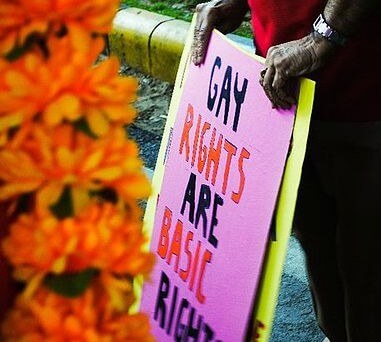
There is no doubt that the Supreme Court in Suresh Kumar v Naz Foundation held that section 377 of the Indian Penal Code, which criminalizes ‘carnal intercourse against the order of nature,’ was constitutionally valid. The court overruled the 2009 Delhi High Court decision which had read down section 377 to exclude ‘consensual sexual acts of adults in private’ as a violation of Articles 21, 14 and 15 of the Constitution.
The Supreme Court judgment has sparked widespread outrage. In this post I do not critically evaluate the reasoning in this case. Instead I propose that we should read down the judgment as being premised on the specific facts of the case. This would hopefully have the effect of encouraging prosecutors not to target consensual homosexual activity.
We must begin by noting that the court does not take the view that LGBT people do not exist or that they are unworthy of respect. We do not hear that LGBT people are an invented minority or that we are engaged in a ‘culture war’ and that Indian people have the right to protect themselves against a ‘homosexual agenda.’ However, like Justice Scalia’s dissent in Lawrence v Texas, the court does conclude that the appropriate forum to settle this question is the legislature, rather than the judiciary (para 56).
Significantly, the rest of the judgment seems to reach factual conclusions similar to those reached by Justice Kennedy’s majority opinion in Lawrence. The court stated that section 377 has not been enforced against consenting adults engaging in private sexual activity, and nor did it target the homosexual community. Like Bowers, and unlike Texas, the case before the Supreme Court was not one in which the petitioner had been prosecuted under section 377. The absence of sufficient evidence that the provision had been used to target homosexual conduct led the court to sustain the constitutional validity of the statute on the ground that no constitutional injury had been shown. These factual claims lie at the core of the court’s conclusion in this case.
In para 38, the court concluded that the section primarily applied to non-consensual acts where coercive violence was used. The court held that ‘in light of the plain meaning and legislative history of the section, … Section 377 IPC would apply irrespective of age and consent’ but that ‘we are apprehensive of whether the court would rule similarly in a case of proved consensual intercourse between adults.’ (para 38). These statements seem to establish two propositions. First, section 377 ‘does not criminalize a particular people or identity or orientation.’ Second, if the record did show that police and the prosecutors targeted consensual homosexual acts under section 377, then the court would strike down the statute. Much of the judgment turns on the failure of the pleadings ‘to furnish the particulars of the incidents of discriminatory attitudes exhibited by the State agencies towards sexual minorities.’ (para 40) While the court fails to appreciate the concept of disparate impact discrimination arising out of a facially neutral statute more generally, it concludes that the available evidence is ‘wholly insufficient for recording a finding that homosexuals, gays, etc., are being subjected to discriminatory treatment either by State or its agencies or society.’ (para 40) So, at least for the equality argument under Article 14 and 15, the court’s primary concern is the lack of factual evidence.
On the Article 21 analysis it appears that more evidence would not influence the conclusion. While the court embraced a substantive due process reading of the right to life and personal liberty it concluded that “harassment, blackmail and torture [against] certain persons, especially those belonging to the LGBT community… is neither mandated by the section nor condoned by it and the mere fact that the section is misused by police authorities and others is not a reflection of the vires of the section.” (para 51)
There are therefore two reasons for reading down the Supreme Court judgment to rest only on the facts of this case. First, prosecutorial discretion must be exercised so as not to target private sexual conduct of consenting adults in a discriminatory fashion. Second, a review court may reassess these factual claims and potentially reach different conclusions.
This article was originally published in the Oxford Human Rights Hub on December 13th, 2013.
